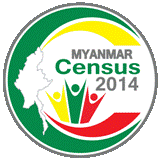
Once the census data is released on May 29th 2015, the Union and State/Region reports, a non-technical short publication on the Highlights of the Census as well as a wall chart with 42 key socio-economic indicators will be available on a DVD. In addition, there will be user friendly excel spread sheets that will enable you to quickly access all the data from the Union and State/Region reports. These publications, together with concise “Figures at a Glance” at the Union and State/Region level, will be available in English and Myanmar on UNFPA’s website and on the Department of Population’s website at http://www.dop.gov.mm on the same day.
Local government administration, research institutions, NGOs, development partners, the business community and the general public will therefore have access to more than 30 different socio-economic indicators for each administrative unit in Myanmar down to the Township level.
Packaging the census data is as important as its release. Presenting it in a way that can be easily understood and is applicable to the needs and context of Myanmar will help ensure wide usage of the census information. For this reason, the Government and UNFPA organised user-producer consultations with more than 100 potential data users that agreed on how best to present the census data. The outline of the Union and State/Region Reports were primarily guided by these consultations. There is also interest from young savvy tech professionals to set-up a 24hour hackathon to develop different software and applications that can help make the data more easily accessible and usable for all.
Census data can be used by all those involved in the development of Myanmar. Local administration, which includes administration at the State/Region levels, at the district levels as well as townships, can use the census data for effective allocation of resources, particularly in those areas where needs are high. Research institutions can use the data to analyse socio-economic development and trends in society and as a reliable source of statistical information. The data can be used by NGOs and development partners as an evidence-base for development programming. In addition, the business community can use the data, for market research and to determine demographic profiles of markets.


